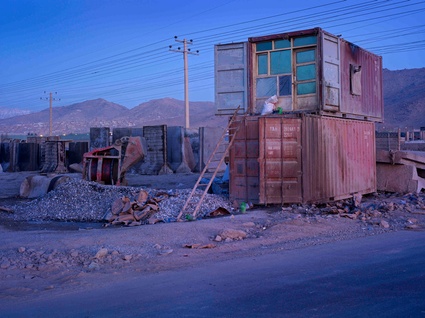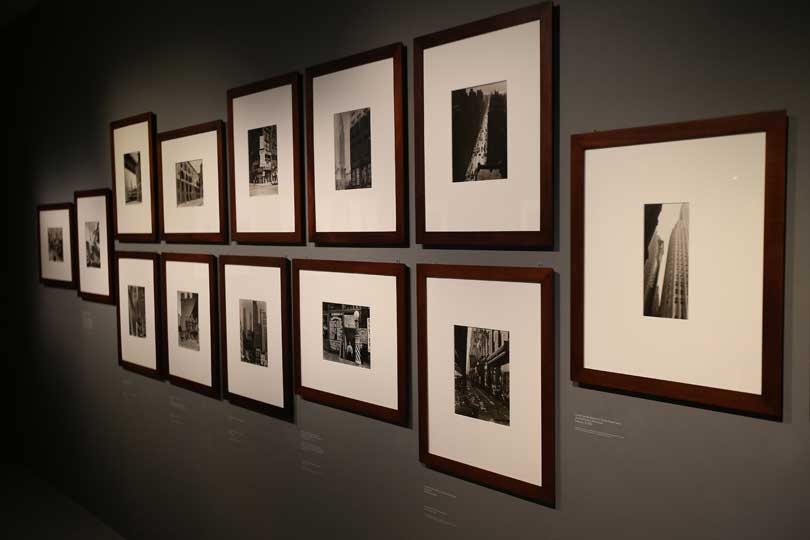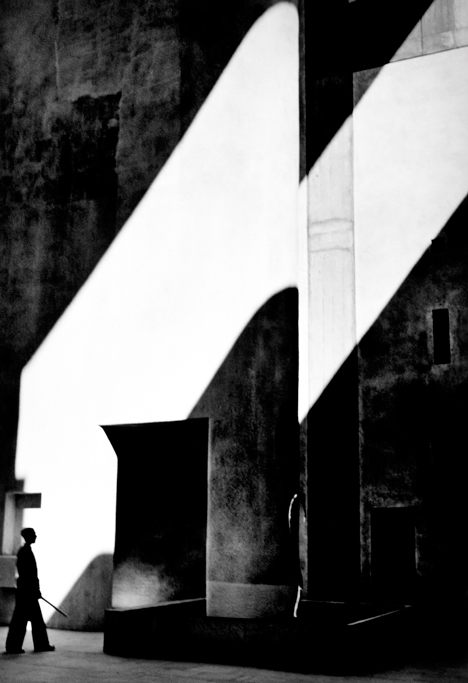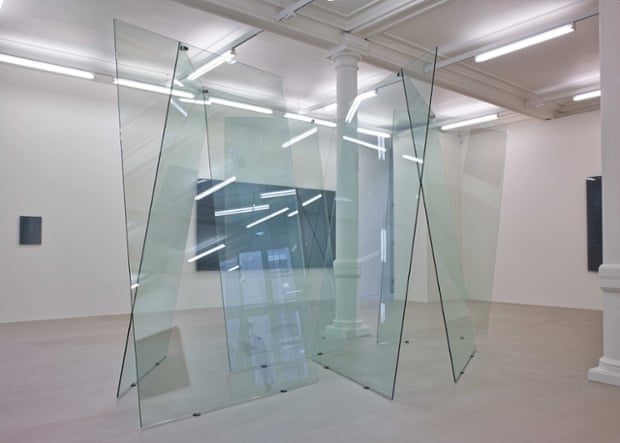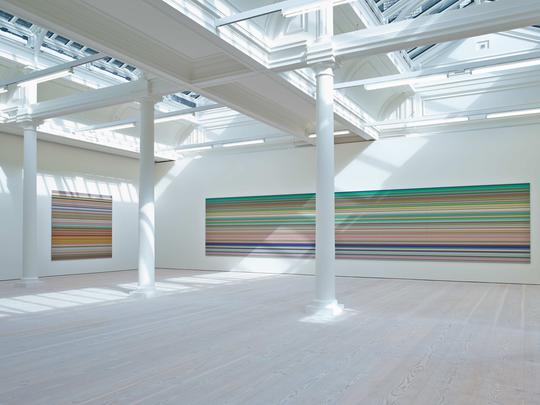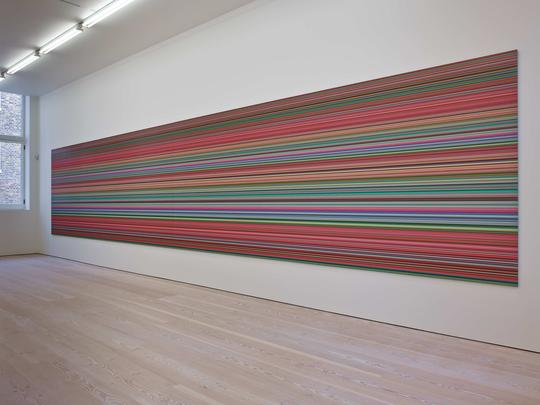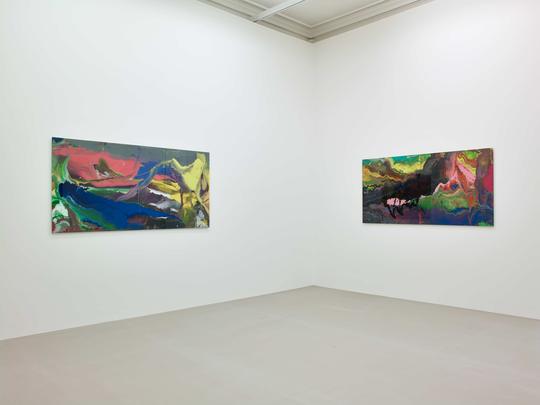 |
| Anselm Kiefer, Velimir Khlebnikov: Fates of Nations, The New Theory of War (2011-2014) |
I was ambivalent about going to see yet
another Kiefer exhibition as I am still in two minds as to whether or not this
is a body of work that continues to develop. While I have maintained a 30 year
love affair with Kiefer’s books, and have always been fascinated by his use of
lead, I have become increasingly disillusioned with the monumentality, what
always seems to me to be an expression of self-obsession, and the reflection of an
overblown ego. In spite of my misgiving,s I went to what turned
out to be a superbly curated retrospective of Kiefer’s work at the Royal
Academy in London.
 |
| Anselm Kiefer, Black Flakes, 2006 |
The courage to stage a retrospective of
Kiefer’s work at the Royal Academy is, in itself, to be acknowledged. It’s odd just to imagine these enormous, industrial-sized sculptures, paintings and
installations in a space designed to house the subtle and the emotionally vulnerable,
as well as the politically charged work of painting in the eighteenth century.
Entry to the courtyard, at dusk on a wet, drizzling, late November day, I am
swept up into a world of beauty and calm, where rusting U-boats are suspended
in two glass vitrines, floating, as though battle passed through here long ago. These are the traces or remnants of another era. Kiefer’s signature script, in
charcoal, on paper, bark, haunts the installation, forcing us to reflect on
what we can never fully understand. Knowing that the piece is titled Velimir Khlebnikov: Fates of Nations, The
New Theory of War (2011-2014)
gives us the facts, but not the mystery that fills the air in the vitrines,
surrounding the boats. Velimir Khlebnikov was an early twentieth-century Russian
Futurist poet and numerologist, an absurdist, who calculated that decisive sea
battles always occur every 317 years.
But these facts, like the battles, are on a distant horizon, far from
the sculpture itself. I wondered, as an appetizer to the exhibition to come,
which would transform which: would the centuries of tradition weigh on these
otherwise unsightly boats, or did the sculpture mark the beginning of a
radical re-vision of the Royal Academy?
 |
| Anselm Kiefer, Der Morgenthau Plan, 2012 |
For me, it was in the final rooms of the exhibition, that I became convinced
that Kiefer still has something to say. Kiefer returns to books, again, as
though he had not quite finished reading, as though he had new ideas that he
had just recalled, recently. The books are, for the first time in his career,
in colour. That said, Kiefer has always been interested and devoted to colour, it’s just
that his chosen colour for exploration has been a palette of greys. The flyer accompanying the
exhibition at the Royal Academy claims these books, that apparently reference Rodin, are erotic. When
he brings colour together with lead, lead becomes delicate and reveals a
rainbow spreading across the otherwise dead, static material. They are
esoteric, as always, but they are also sensuous, sumptuous and beautiful, much more than simply erotic.
 |
| Anselm Kiefer, Morgenthau Plan, 2013 |
In
the later coloured canvases, the Morgenthau
paintings, he not only introduces radiant colour, but there is always a balance
of sorts, a scale, though it is old and rusted, its contents burnt and left to
rot amid the life that surrounds it. The scale speaks of justice, even if
it is from another era. The flier again mentions that these works references
van Gogh, the sunflowers, but with their French titles, they also find
influence from Monet’s waterlillies, the canvas and colour expressing a chaos
that seethes beneath the surface of Monet’s final works. I realize in this last
room as Kiefer, unusually, sees light and brightness and colour at the end of
his life, that what is overwhelming in the other, earlier works, is not only
the size, but the predominance of death and destruction, fire and ashes,
bunkers and the detritus of war. The landscapes in his earlier works, up until
the last few years are heavy, always landscapes in the middle of a storm, or
effaced by a storm that passed through, maybe recently, maybe a long time ago,
it’s difficult to tell. In the Morgenthau
paintings, there is always a sky, hope, and we are
placed to look up, out of the wheat fields, not down, on a land that extends
filled with death, lined with graves that are the reminder of war out of control. The
details on the much more free form Morgenthau landscapes are executed in gold leaf, and I note the hint of
birds in the sky. These elements make me
think that as an artist Kiefer is becoming brighter, freer, not necessarily
more or less abstract, it’s just that there seems to be more hope. This is
unusual for an artist growing older, especially one as preoccupied with the darkness of German history as Kiefer has been throughout his career.
 |
| Anselm Kiefer, For Paul Celan: Stalks of the Night, 1998-2013 |
Two rooms back, in a handful of works for
Paul Celan (nothing new in Kiefer’s oeuvre) are tactile, grey, sheets of lead
as canvases sprinkled with diamonds. Apparently, diamonds remind us of the
connection between Heaven and Earth. They remind me of the celestial lights
that once decorated the ceilings of medieval churches, light that have fallen
into the ground and made the lead luminescent. In the diamond-filled landscape
of For Paul Celan: Stalks of the Night
and Der Morgenthau Plan with their
blues and gold leaf, yellows and violets, the alchemical reaction that Kiefer
has been working on, looking for all his career has finally materialized. If he
began with fire and charcoal and death, the burnt books of the 1970s, it’s as
though all is transformed: the richness and prosperity of the skies and the
universe have finally reached the earth.
